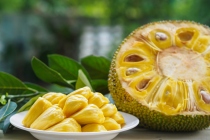It’s no secret that India loves its rice dishes – visit any one of London’s best Indian fine dining restaurants and you can expect to see a range of tasty rice recipes presented in the varied menus. These precious grains are an integral part of the staple diet followed by people all over India, as well as throughout other countries in Asia. The fertile lands of India are ideal for the production of rice, providing the perfect environment for glassy paddies to thrive and the country is one of the world’s largest producers of both white and brown rice.
Although many of the dishes of the north are designed for bread accompaniments, with rotis and parathas put to best effect scooping up thick sauces, rice is still consumed widely in this region. However, it is in the eastern and southern states where rice is consumed in the greatest quantities.
Poha is a form of rice preparation that experiences huge popularity in India. It is used in a great number of dishes throughout the country and involves removing the husks from the grains and parboiling the rice before rolling them flat and drying them out into flakes. These flakes are light, crisp and easy to digest, yet provide excellent bulk to meals when they come into contact with liquid – puffing up as they absorb the moisture. Poha is a key ingredient for snacks and convenience meals, and it is a permanent fixture in the lives and kitchens of Indian people throughout the country.
The versatility of poha makes it a valuable asset to the Indian pantry. Whether you sauté it with spices, fry it with vegetables, deep-fry it or simmer it into a rice pudding – there’s a poha preparation to suit all tastes.

The Preparations of Poha
You don’t necessarily have to cook poha up in a complicated dish in order to enjoy it. The quickest preparation might be to soak the raw flakes in a little water or milk and flavour them with salt or jaggery. Alternatively, a popular method of preparation for breakfast in Madhya Pradesh is to lightly fry the flakes with spices, nuts and dried fruit. The Maharashtra version involves frying mustard seeds, spices, chilli and onions before poha that has been briefly soaked is added to the mix to steam.
In Kerala with its abundance of coconut trees, a favoured poha preparation is aval kuthirthathu, a sweet dish filled with exotic texture – milk, sugar, coconut and banana are the traditional ingredients added. Aval velayichathu is also popular – the beaten rice is fried with daal, nuts, coconut and jaggery.
Poha jalebi is renowned as the main breakfast meal of Indore. This poha dish consists of a garnish of pomegranate seeds and is dished up alongside the crispy, deep-fried knots of dough, known as jalebi. In Odisha, they prefer to take their breakfast poha cold, mixed with milk, jaggery and mashed banana in a similar fashion to our Western breakfast cereals. In this region, as well as in Bihar, dahi chuda is popular not only at breakfast time but is traditionally consumed as the primary meal at the Makar Sankranti festival. Dahi chuda consists of poha mixed with creamy yoghurt, sweetened with sugar.
There are many different variations of poha, and you should definitely try it if you get the chance.




